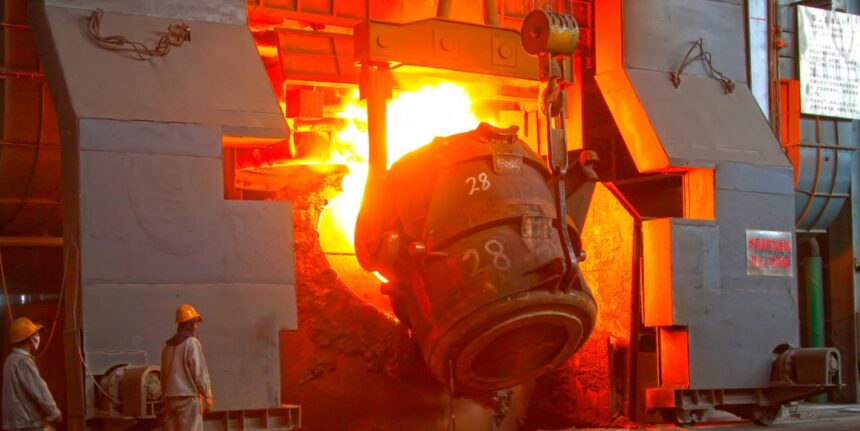Chinese Steel Subsidies Distorting Global Market, Undermining Climate Goals
A recent report from the Organisation for Economic Cooperation and Development (OECD) has shed light on how Chinese state subsidies for steel producers are significantly distorting the global market and hindering investments aimed at reducing carbon emissions.
China, as the world’s leading steel manufacturer, produced over a billion tonnes of steel in 2024. However, with a decline in domestic demand, particularly from the country’s property sector, Chinese firms have been increasing their exports to overseas markets.
The OECD’s Steel Outlook 2025 report highlighted the growing influence of non-market dynamics in international steel trade, providing Chinese producers with an unfair advantage. The report noted that China’s steel subsidization rate, as a share of company revenues, is five times higher than the average in other economies, leading to a more than doubling of Chinese steel exports since 2020.
Chinese steel exports hit a record 118 million tonnes this year, while imports into China plummeted by nearly 80 percent to just 8.7 million tonnes. This shift is creating significant pressure on global steelmakers as their own exports decline and they face an influx of cheaper imports.
Over the past four years, there has been a noticeable increase in steel imports across various regions, including a 13 percent rise in the EU and UK, an 18 percent increase in Japan and South Korea, and even higher percentages in other regions such as North America, Turkey, South America, and Oceania.
The oversupply of steel from China is also impacting emerging markets in North Africa, the Middle East, and Southeast Asia, where domestic markets are already oversaturated. This has led to an increase in exports to developed economies from these regions.
The surge in steel imports has prompted a wave of trade defence measures, with 81 anti-dumping investigations into steel products launched in 2024 alone by 19 governments, marking a significant increase from the previous year. The majority of these cases targeted Asian exporters, with China being the primary focus.
As a response to the issue, countries have adopted protectionist measures. For instance, US President Donald Trump imposed a 25 percent tariff on all imported steel, while the UK passed emergency legislation to nationalize its last remaining blast furnaces after threats of closure from Chinese-owned British Steel.
The OECD report also highlighted the impact of the availability of cheap steel on long-term climate goals, as the steel sector contributes around eight percent of total global carbon dioxide emissions. The current market distortion is making it challenging for producers to invest in greener technologies.
In conclusion, the OECD called for international collaboration to address the steel surplus and restore fairness in the industry. The report emphasized the need for global cooperation to ensure a level playing field in the steel market, stating that “steelmakers cannot achieve sustained profitability until global overcapacity and its fallout are properly tackled.”








